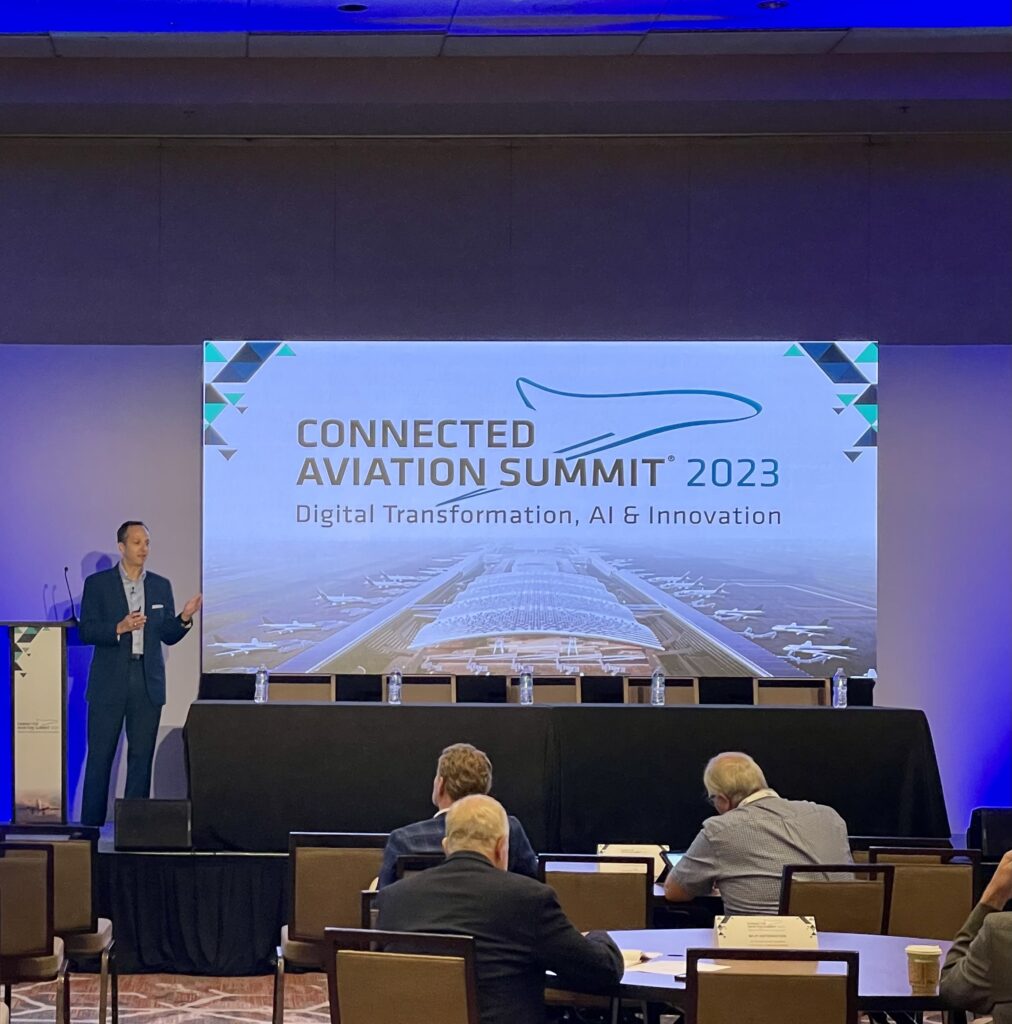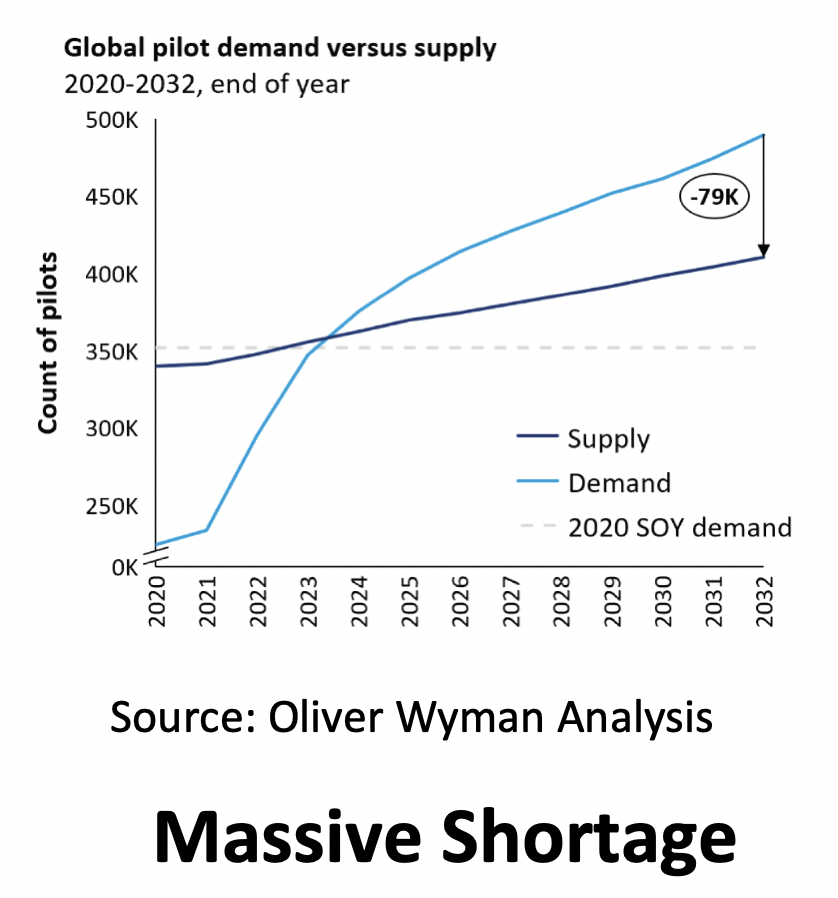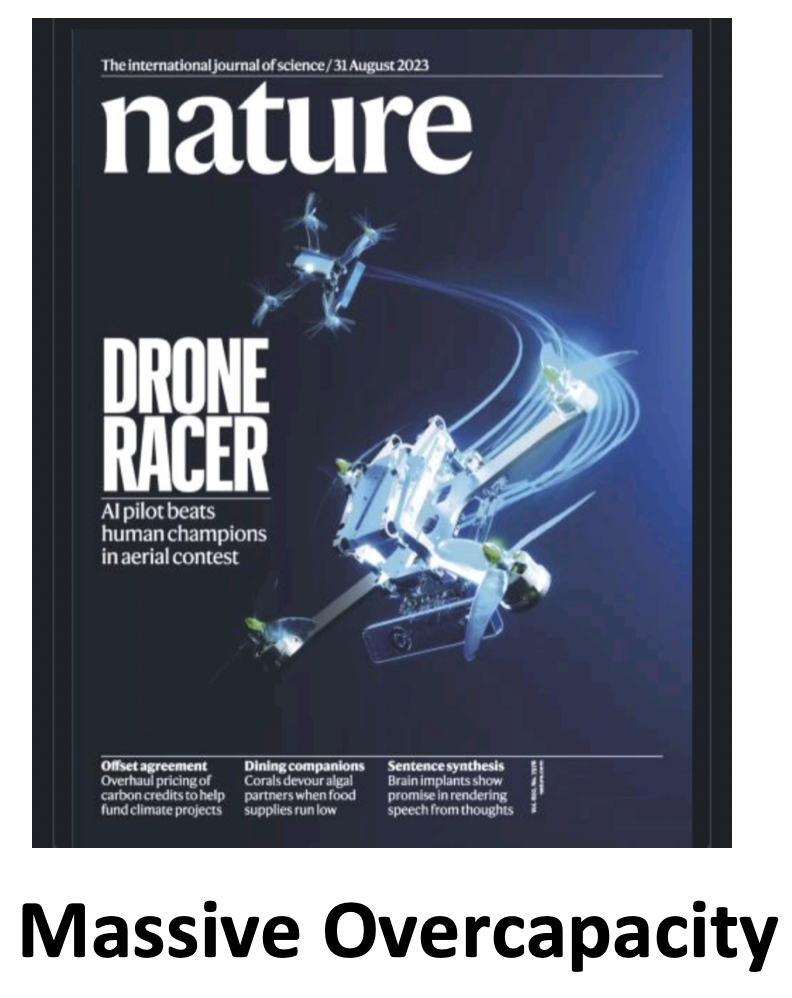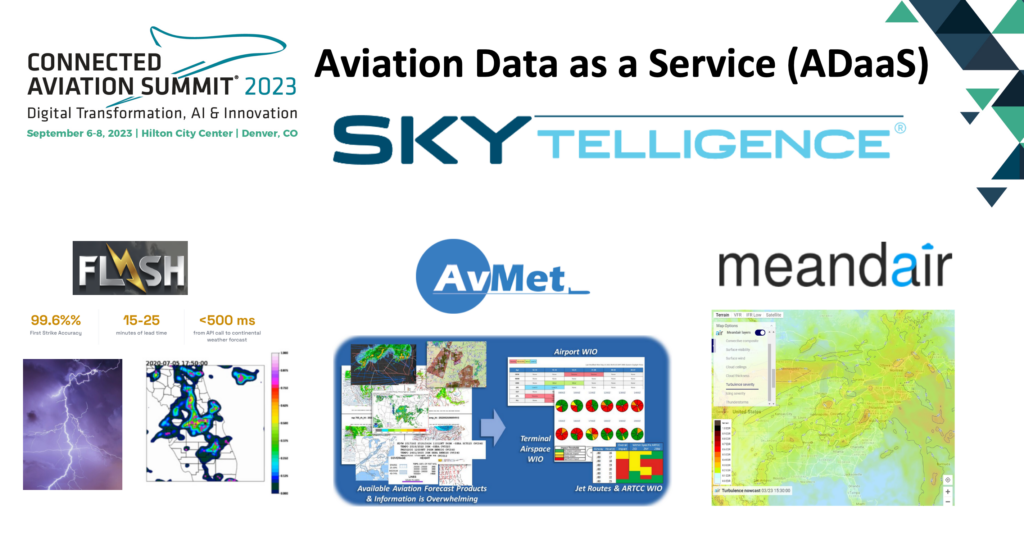Piloting the Future: AI, eVTOLs, and Sustainability


Ryan Stone of SmartSky delves into how emerging technologies, from AI-assisted flying to eVTOLs and advanced weather data, can address the aviation industry’s challenges, from pilot shortages to sustainability and flight efficiency. (Photo: Jessica Reed)
DENVER, Colorado – The recent Connected Aviation Intelligence Summit provided a unique stage for discussing the future of aviation. Ryan Stone, president and co-founder of SmartSky Networks, addressed two pressing issues facing the industry: a predicted shortage of 80,000 pilots by 2032 and aviation’s carbon footprint.
Addressing the Pilot Crisis
Stone pointed out the rise of training programs, collaborations between major carriers and regional airlines, and adjustments in pilot salaries. “Airlines are creating their own flight schools,” he noted.

However, he introduced an exciting perspective by highlighting a recent event where AI piloted a drone that outperformed the human drone racing champion. This milestone indicates that with some regulatory adjustments, there might be a shift towards reduced reliance on human pilots. Single pilot operations, backed by AI and technological advancements, could play a significant role in bridging the pilot gap.

“We already see a lot of autonomy out there,” he said. “Technology can solve these kinds of problems.”
Sustainability in Aviation
Stone’s discussion on aviation sustainability began by highlighting that, as of 2016, aviation was responsible for 2.8% of global greenhouse gas emissions, translating to an effective contribution of 3.5% due to high-altitude emissions. The industry is already feeling the heat, both from climate activists and Mother Nature. Stone showed a photograph of an airplane defaced by climate protesters, emphasizing the urgency of the issue.
“Our industry does care; we’re developing ways to deal with the crisis,” Stone remarked. To tackle this, the aviation industry is investing in eVTOLs (electric vertical take-off and landing aircraft) powered by batteries or hydrogen fuel cells. Another solution, sustainable aviation fuel (SAF), offers a lifecycle carbon reduction of 80%.
“If you’re like me, the first time you heard about SAF, you thought, ‘What is this new magic fuel that doesn’t emit carbon?’ That’s not what SAF is at all,” Stone explained. “SAF is a fuel that’s made from biomass, or plants. Plants absorb carbon dioxide. If you take that biofuel, and then you burn it in a jet engine, the carbon dioxide that comes out then gets absorbed by the plants, and back to the fuel—it’s a cycle. So it’s effectively carbon neutral; you’re not actually reducing carbon.”
Stone observed that shifting to electric solutions doesn’t automatically equate to sustainability. The source of that electricity needs scrutiny. By 2050, around 44% of the U.S.’s power will come from fossil fuels, which would still indirectly contribute to aviation’s carbon footprint. Stone emphasized the importance of baseload nuclear power, which offers a continuous and carbon-neutral power supply.
Efficiency in Flight Paths: Saving Fuel and Carbon Emissions
Stone shifted the conversation to fuel efficiency, noting the $215 billion spent globally on fuel each year. He used the example of the regular holding patterns at London Heathrow, highlighting the potential for vast savings if more efficient routing saved just 10% of fuel. This would mean a 0.3% decrease in carbon emissions and $21.5 billion in savings annually.
The solution, Stone suggests, already exists in the form of five-dimensional trajectory-based operations. This technology can save between 5% to 15% on fuel by optimizing flight paths. However, implementing this requires real-time data sources and a shift in the human-machine interface.
At SmartSky, they’ve developed Skytelligence, an API-based data exchange system. It utilizes information including ADS-B, recently cleared routes, aircraft operating constraints, and more. Stone introduced three companies with whom they are collaborating and leveraging the Skytelligence solution. The first one, Flash, offers lightning predictions with more than 90% accuracy. AvMet provides a predictive Weather Impact Outlook. “They have broken down the forecasting over the next day, so you can see exactly where the winds and storms would be coming from, and do better predictions,” said Stone.
He also mentioned Meandair, a company that focuses on crowdsourced weather predictions. These partnerships aim to provide more accurate weather data to help optimize flight paths.

(Photos: Ryan Stone/SmartSky)
SmartSky Networks announced last fall that its air-to-ground (ATG) connectivity service offering is available for the Cessna Citation X series aircraft. Check out our interview with both Ryan Stone and David Helfgott, CEO, here.
The Future of Flight Management Systems
The culmination of Stone’s address was the introduction of the cloud-based Flight Management System (FMS), developed in collaboration with Mosaic ATM and GE Aviation. This system reduces the time required to change a flight’s trajectory by 70%, resulting in significant fuel savings. Coupled with Universal Avionics’ announcement of a connected FMS, Stone envisions a future where flight planning adapts in real time to impending changes.
Stone highlighted not just technological advancement but its intelligent application in solving aviation’s most significant challenges and sustainability objectives. From the threat of pilot shortages to the looming climate crisis, innovative technologies—when combined—can chart a more efficient path forward for the industry.
—————
Boost Internet Speed–
Free Business Hosting–
Free Email Account–
Dropcatch–
Free Secure Email–
Secure Email–
Cheap VOIP Calls–
Free Hosting–
Boost Inflight Wifi–
Premium Domains–
Free Domains





